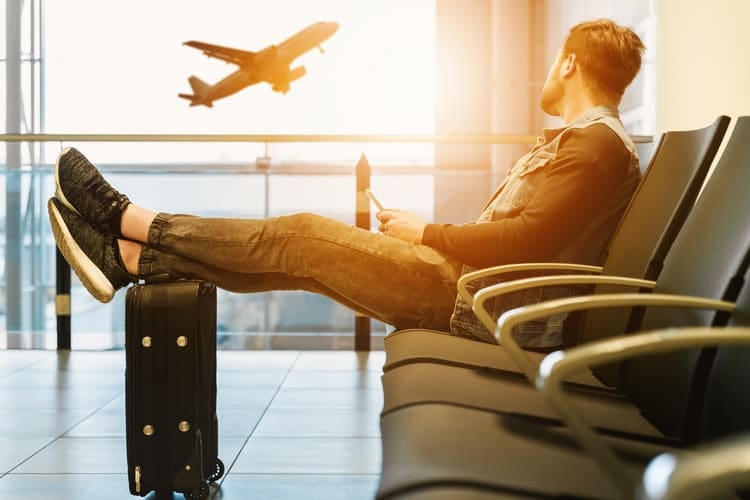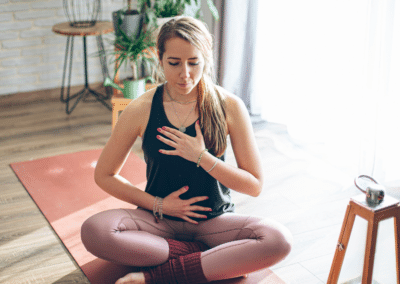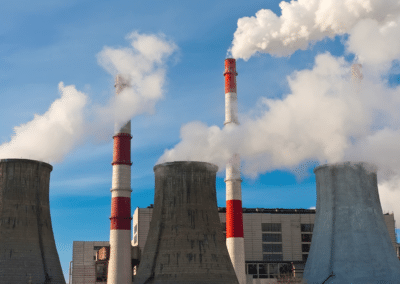Travel has become an integral part of life for most people. With cheaper flights, far off places becoming more accessible than ever before, and the internet inspiring us with “bucket list” visits, there has been a significant upswing in the number of people packing their bag and taking off. Over 1.4 billion people traveled outside of their country in 2018, and this trend is likely to continue. While exploring new places is an adventure, one thing to consider is how the air quality in these other countries could be affecting your health.
In recent months, palm oil plantations burning their lands in Indonesia cause a dangerous level of pollution in the neighboring countries of Singapore, Malaysia, and Brunei. Air Pollution levels are likewise increasing for countries in the Amazon Rainforest region due to the disastrous fires that stuck there. Other countries like India and China have been plagued with poor air quality in recent years, too, from factories and overpopulation.
So…could our travel adventures be negatively impacting our health? How does it affect us? And what can we do to protect ourselves while traveling?
What is Air Pollution
Pollution is generally comprised of a blend of particulate matter (PM) – gases, chemicals, and biological materials – that are circulating in the air we breathe. We all inhale a certain amount of pollution on a daily basis, regardless of where we live, but it can become a problem if there are excessive amounts of pollutants in the air. Even short exposure time to contaminants can irritate the eyes, nose, and throat, and can cause coughing and shortness of breath.
Globally, there has been an increase in the amount of pollution in the air, and this is due in part to over-farming (slash and burn technique), non-ecologically sound energy generation, and climate change. Mining, smelting, heavy manufacturing, and other industries are also considered major contributing factors to pollution. These factors combine to create a higher amount of outdoor air pollution, especially in built-up areas like cities.
Overexposure to air pollution is causing extreme health issues for the public. The World Health Organization (WHO) estimates that at least 2 million people die prematurely around the globe due to poor ambient air quality. This is worrying development and an aspect that few consider when planning a trip.
Impact on Travelers
While ticking off your packing list, the climate is often a consideration – do you need sunscreen? Should you pack a heavy coat?
We think about the environment and our comfort when preparing to go somewhere new, but we rarely consider our health. It’s time we gave this aspect more room in our thoughts, especially if we have any underlying health concerns. People with cardiovascular or respiratory issues need to pay particular attention to air quality, as exposure to particulate matter can have a severe impact.
Travel Wise
If you have a choice of destination, it’s a good idea to investigate the air quality in the region before booking. If you are traveling for work or a specific event, you can stay up to date on the condition of the air in the area and plan accordingly.
The best way to read up on the pollution levels in an area is by looking at the Air Quality Index (AQI) for the country or city. Governments all over the world measure the pollution levels and quality of the air and feed it into the AQI to keep the public informed of changes. Use tools such as the World’s Air Pollution: Real-time Air Quality Index (WAQI) to help you plan your trip by providing current and forecasted information on air pollution levels.
The WAQI website collates the information from government sources and populates an easy-to-understand map showing the levels of air pollution. The map gets updated hourly from the data collected at the air quality measuring stations around the globe. These stations measure the levels of PM, ozone, nitrogen dioxide, and carbon monoxide to monitor the quality of air. Below 50 is considered safe, with 300+ being considered hazardous.
Apart from choosing a less polluted destination, are there other things you can do to protect your health while traveling?
How to Protect Yourself
Even having done your research and using the AQI to plan your trip, you could still encounter some troublesome air pollution. The AQI changes daily and can be affected by significant events such as fires, chemical accidents, and weather.
While in general larger cities are more likely to have higher levels of pollutants in the air than small oceanside villages, parts of cities and towns can vary considerably too. With so many variables possibly impacting on the quality of the air you will be breathing, it is sensible to prepare yourself as best you can. If you have an underlying health issue, ensure you have brought enough medication or medical aids with you to last your journey.
Nasal filters, such as O2, can offer protection from pollutants in the air. These compact, comfortable filters are inserted into the nasal passage to filter out particulate matter and other harmful contaminants at 99% when over 10 microns. O2 Nose Filters are available in different sizes to ensure a perfect fit and wearing them while traveling can help to prevent the inhalation of pollution without impeding your breathing ability or ruining your vacation photos!
Nowhere in the world is entirely clear of pollutants. Being prepared and taking some precautions is essential for good health. If the area you are in is particularly bad, then staying indoors or limiting outdoor activities may be the only way to truly protect yourself.
Protect yourself while traveling.
Click here for a FREE (+S&H) sample pack to see which size works best for you!



